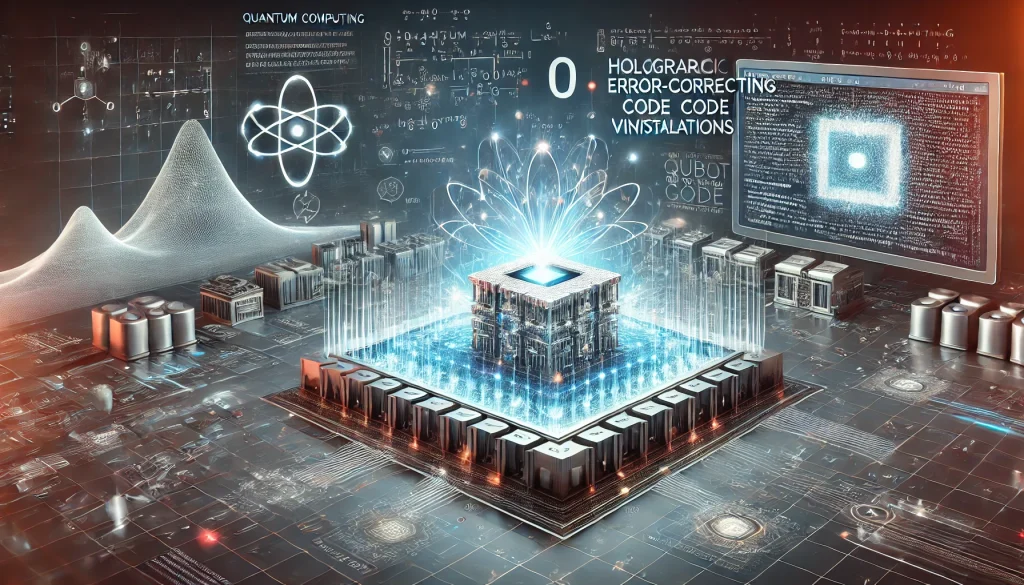Quantum Error Mitigation: Breaking Down the Latest Techniques
In the rapidly evolving landscape of quantum computing, error mitigation stands as one of the most critical challenges facing researchers and engineers today. As quantum systems become more complex and Quantum AI applications demand higher precision, the ability to manage and minimize errors becomes increasingly crucial. This comprehensive guide delves into the latest techniques in quantum error mitigation, exploring how these methods are shaping the future of reliable quantum computation.
Understanding Quantum Errors: The Foundation
Quantum errors present a unique challenge unlike anything in classical computing. These errors can manifest in multiple ways, from phase flips to amplitude damping, making them particularly challenging to address. In 2024, as quantum processors push beyond 1000 qubits, understanding and mitigating these errors has become more crucial than ever.
A quantum error occurs when a qubit deviates from its intended state due to interaction with its environment or imperfect control operations. Think of a spinning top gradually wobbling due to air resistance and friction – quantum states similarly degrade through a process called decoherenceUnderstanding Decoherence in Quantum Computing What is Decoh....

Current State of Error Mitigation Techniques
Recent advances in error mitigation have revolutionized our approach to quantum computing reliability. Key developments include:
Zero-Noise Extrapolation (ZNE)
This technique involves running quantum circuits at different noise levels and extrapolating to estimate the zero-noise result. Recent implementations by IBM have shown up to 95% improvement in computation accuracy using ZNE.
Probabilistic Error Cancellation
A sophisticated approach where errors are characterized and then deliberately introduced to cancel out existing errors. Google’s Quantum AI team recently demonstrated this technique achieving error reduction rates of up to 88% in specific quantum algorithms.
Dynamic Circuit Compilation
This new approach, introduced in late 2023, adaptively modifies quantum circuits based on real-time error measurements. Early results show promise in reducing error rates by up to 75% compared to static compilation methods.
Practical Applications and Industry Impact
Error mitigation techniques are already making waves across various quantum computing applications:
- Financial Modeling
- Monte Carlo simulations with 40% higher accuracy
- Portfolio optimization with reduced noise interference
- Drug Discovery
- Molecular simulations with improved reliability
- Quantum chemistry calculations with enhanced precision
- Machine Learning
- Quantum neural networks with better training stability
- Hybrid quantum-classical algorithms with reduced error propagation
The Role of Quantum AI in Error Mitigation
One of the most exciting developments is the integration of artificial intelligence in error mitigation strategies. Machine learning algorithms now actively predict and correct quantum errors in real-time, leading to:
- Adaptive error suppression techniques
- Smart quantum circuitUnderstanding Quantum Circuits in Quantum Computing When del... optimization
- Automated error characterization and correction
Technical Implementation Guidelines
When implementing error mitigation in quantum systems, consider these key steps:
- Error Characterization
- Measure gate fidelities
- Analyze coherenceUnderstanding Coherence in Quantum Computing In the fascinat... times
- Map systematic errors
- Mitigation Strategy Selection
- Evaluate circuit depthUnderstanding Circuit Depth in Quantum Computing What is Cir... requirements
- Consider available classical computing resources
- Assess hardware constraints
- Implementation and Validation
- Benchmark results against known solutions
- Verify error reduction through randomized benchmarking
- Monitor system performance metrics
Future Prospects and Challenges
As we look toward the future of quantum error mitigation, several promising directions emerge:
Emerging Technologies
- Topological error mitigation
- Machine learning-enhanced error prediction
- Real-time error compensation systems
Research Frontiers
- Development of hardware-specific mitigation techniques
- Integration with quantum error correction codes
- Advanced characterization methods
Industry Benchmarks
- IBM’s latest quantum volume achievements
- Google’s supremacy experiments with error mitigation
- Rigetti’s modular error mitigation approach
Conclusion
Quantum error mitigation remains a dynamic and crucial field in the advancement of quantum computing. As systems grow more complex and applications demand higher precision, these techniques will continue to evolve and improve. The integration of Quantum AI and machine learning approaches promises even more sophisticated error mitigation strategies in the future, bringing us closer to the reality of practical, error-resistant quantum computation.
Understanding and implementing these error mitigation techniques is essential for anyone working in quantum computing, from researchers to industry practitioners. As we continue to push the boundaries of what’s possible with quantum systems, error mitigation will remain at the forefront of enabling reliable and practical quantum applications.

